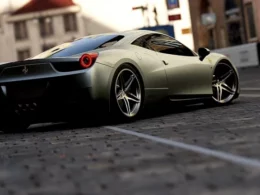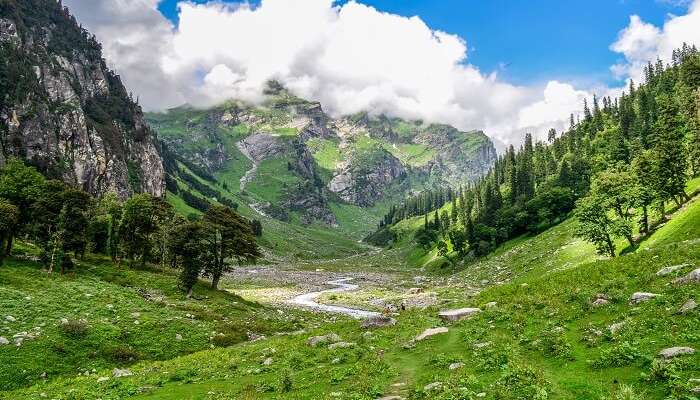Bun Pimailao
Officially, the holiday begins on April 13, when people, having collected water in various containers, go to temples. Pouring flower petal water over a Buddha statue is the most important ceremony for any Laotian to celebrate a happy and prosperous New Year. But this is not the main difference of the holiday.
The timid celebration of Bun Pimailao in Laos begins on April 12th. On this day, a gaping passer-by runs the risk of falling under a crazy bucket of water. But these are isolated cases. The riot of the holiday begins on April 13! And I must say that the Laotians, in terms of the breadth of the scope of the holiday, will give odds to many other countries. This is some kind of explosion, a surge of emotions! And here, beware. Water flows from everywhere in streams. Many speakers, the size of a small, and sometimes large chest of drawers, are lined up along the streets. And in each column the decibels of their music rumble. Near them, already wet from head to toe with BeerLao in their hands, flocks of young people are dancing.
And, please, do not flatter yourself that if you are a tourist, then this cup will blow you. Not! Everyone should be wet on this holiday. The most you can do is to remove all the equipment: cameras, mobile phones, laptops. Otherwise, everything will be irretrievably lost. Now that the preparation is over, you can surrender to the will of the holiday. As the saying goes, relax and enjoy.
Bun Pimailao is celebrated throughout the country. Therefore, you can be drenched not only in cities and towns, but even on deserted mountain roads. It is not clear from where young people jump out with buckets and basins, and, with joyful cries, pour water over a passing vehicle. Well, if you eat in a bus with tightly closed windows.
The tradition of celebrating Bun Pimailao is not limited to dousing. You can see that the faces and hands of the douchers are smeared with different colors. Someone in black soot, someone in yellow clay, and someone in white talc. To smear a passerby means to cleanse him of everything bad and wish him happiness in the new year. And if you pass or drive by, then they will also try to douse you, paint, and even lather, in the literal sense of the word.
There is a general belief that how you celebrate the New Year is how you will spend it. Laos is a poor country. This is probably why the Laotians try so hard to celebrate. And judging by the scale of the festivities, then in 2-3 years Laos should have been the most highly developed country in the world with a GDP growth of at least 500% per year. But that’s probably not what they need. When you meet people in mountain villages who live in houses with mats instead of walls, you do not notice that they are weighed down by this. In general, in the countries of Southeast Asia, people have a completely different attitude to life. And happiness, in their understanding, is significantly different from European.
Bun Pimailao is a nationwide celebration. One gets the feeling that this is walking one family. Everything is so simple and open. It is not uncommon to see such a scene. A crowd of girls and boys having fun surrounds a tuk-tuk passing by. While some joyfully douse passengers, others bring a glass of BerLao beer with ice to the tuk-tuk driver. And if you consider that such cheerful companies stand every 50 meters, it becomes clear that this stop is not the only one. And somehow they are not afraid of formidable police officers, who mercilessly punish for crossing a continuous, or extra ppm. But, we must pay tribute, here all participants in the movement respect each other.
During the celebration of Bun Pimailao, one may encounter such a situation. Many tourists, in order to have transport mobility, rent bikes. But, during the days of festivities, this may cause problems. A lot of rental offices categorically refuse to provide their services. They justify this by the fact that on days of dousing you can easily get into an accident after another bucket of water towards you, and they don’t need extra problems with the police.
It is believed that the tradition of pouring is associated with the beginning of the hot season and a number of Buddhist beliefs. Water washes away all negativity, and clay and talc repel dirt. In principle, one can agree with this, but if this is a one-time procedure. But when you are smeared with soot several times a day for a week, then with clay, then sprinkled with talc, and at the same time doused with an immeasurable amount of water, it becomes difficult to get rid of the negative already, literally on the third day.
This is probably why, on the eve of Bun Pimailao, the country’s authorities place in the media regulations on behavior on holidays. According to the ordinance, showering is allowed only from 9 a.m. to 6 p.m. And, oddly enough, these rules are respected. Well, perhaps, some excessively cleared peanut, having seen enough of the elders in a day, will try to pour you out of a bowl. The decree even stipulates what kind of water can be poured over: “it must be clean and not contain pieces of ice.”
Well, what else can be said about this holiday? The test is pretty hard. And if, suddenly, one day you happen to get to Bun Pimailao, it remains only to wish you patience and endurance. Happy New Year! Bun Pimailao!









